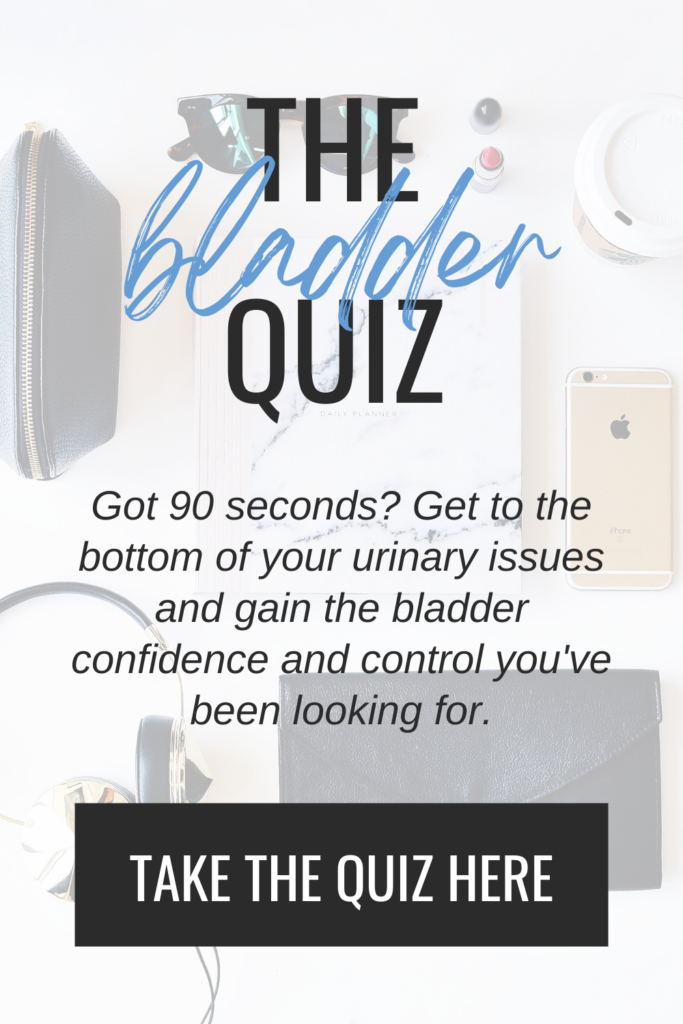If you’re a new mama like me, then it’s likely that you spend hours a day feeding your little one. It doesn’t matter if you’re breastfeeding, bottle-feeding, or pumping- that ish takes time! Honestly…more time than I expected it to.
It’s also likely that you’re in a season of healing after birthing a baby. The fourth trimester is no. joke. In fact, I’ve personally found it to be the hardest trimester of all. My postpartum story includes tearing that resulted in leakage, pain, hemorrhoids, aaaand a prolapse, so I can definitely relate on all accounts. I can also attest to the fact that trying to care for yourself and a new babe is quite possibly the most difficult juggling act EVER, and it often results in baby’s needs overshadowing our own.
The other day I was breastfeeding Sloan and realized my body was doing all the wrong things- leaning, clenching, slouching, tensing- which is probably why, by the end of my days, I feel like the Leslie Knope gif saying, “everything hurts and I’m dying”. Dramatic, I know. But feeding after feeding, day after day, bad mechanics and poor posture take a toll on a mama’s body that really should be moving towards recovery, not breaking down more.
As a physical therapist, my job is to analyze body movement and positioning. So it’s no wonder that I started evaluating how I’m breastfeeding, and holy smokes…I wasn’t doing my body (and especially my poor pelvic floor) any favors. Where I sat, how I leaned, the way I held Sloan, and ~my goodness~ the faces I caught myself making! It’s no wonder my jaw, toes, and everything in between were like…”yeah, can we not!?”.
So I took it upon myself to really pay attention. With a few small tweaks and a whole lotta mindfulness, my body is happier, my pelvic floor is recovering faster, and I’m actually enjoying those built-in hours with my girl by my side. If you’re curious what I did to see those kind of changes, keep reading friend.
Sit evenly.
Almost all our pelvic floor muscles attach in one way or another to the sit bones, and if we lean too much to one side, those muscles are more likely to be irritated, painful, and dysfunctional. I don’t know about you, but I have a “good boob” and find myself feeding on (and leaning towards) one side more than the other. I also catch myself on the same tried and true couch corner for everything from baby feeding to movie watching, so the tendency to lean is stroooong.
In the perfect world, I’d recommend avoiding the lean altogether and sitting with even weight through both butt cheeks. But let’s be realistic here…leaning is inevitable. So here are a few tips to keep ya comfy-
- Use pillows. If you’re going to lean, cushions, pillows, or boppys can give your body the support it needs so that your muscles don’t have to work to hold you in that position. Honestly, I’ll take any excuse to add another throw pillow to my already vast collection. Target trip anyone?
- Switch sides. Trading off between the right and left butt bone will ensure that one isn’t taking all the pressure every time. Vary what you sit on if possible, move to a different side every 10 minutes or every feeding, or *gasp* change couch corners. You’ll be surprised what a difference this little adjustment can make.
- Sit criss-legged. Sitting like this is a personal favorite because it just feels cozy AND tends to eliminate the lean. If your hips and knees don’t mind this position, go for it! Just be sure to switch up which leg is on the top and bottom if you can.
Feet flat.
Coming from a girl who’s 5’4” on a good day, #thestruggleisreal with this one. I don’t think we have a single chair in our house that allows my feet to actually sit flat on the floor. I find myself scooting my butt forward to avoid the leg dangle, which is fine for a few minutes, but with hours a day of feeding, this just doesn’t work.
If our feet don’t touch the floor, we tend to fall into a posterior pelvic tilt. This tucks our booty under which can cause tailbone pain, a tight pelvic floor, and stress to the low back. In order to avoid this, try these tricks-
- Get an ottoman or stool. Again, any reason to buy more home décor is a win with me. Add it to the Target list! But seriously, just putting a little something under your feet allows the rest of your body to let out a sigh of relief.
- Test out chairs. If you have the ability to try before you buy, attempt to get a chair for your nursery that has the right height and seat depth for your body. In a time of online shopping this can be difficult, but paying attention to the dimensions (and reviews) is helpful.
- Use a recliner. This option, if you have it, completely eliminates all the short girl probs. Just make sure your booty is sitting all the way back in your chair and that you’re following the above rule of sitting evenly whenever possible.
Give your toes a break.
If you feed your baby in a rocking chair like I do, then this one is a must. The feet and pelvic floor are right next to each other on the side of the brain that controls muscle function. If your feet are working hard, that means your pelvic floor is too, and a stressed pelvic floor causes tightness and tension, which is not a good thing.
Using your toes to rock your baby is kind of like doing hundreds of calf raises, which causes my feet to cramp just thinking about it. Peep this advice if you’re a rocker like I am-
- Feet flat. Yep, I’m reminding you that your feet need to be totally supported while you’re rocking your little one. If your toes are the only things touching the floor, they’re stuck doing all the work. Scroll up just a bit if you need a reminder on how to achieve that elusive flat foot support.
- Bring out the big guns. The muscles in our feet are tiny compared to the ones in our legs. And while our feet are meant to perform repetitive movement (hello walking!), we should give them a break when we can. Force your calves and thighs to drive the rocking motion rather than your feet, and don’t forget to give me an instagram shout out when you credit your toned legs to that rocking chair workout.
Look up.
I’ve found that it’s almost physically impossible to feed your baby without staring at him/her. I mean MY GOSH they’re just so cute, how can you not?! But looking down for long periods of time places stress on the neck and jaw, and the muscles in this area are actually psychologically connected to the pelvic floor (insert mind blown emoji here)!
Now I’m not going to advise you to stop looking at your little one! I’d laugh in the face of anyone who told me to stop admiring my Lolo girl during feedings. But you can avoid the neck, jaw, and pelvic floor issues with these suggestions-
- Take a break. Be conscious of how long you’ve been looking down and every few minutes look up, side bend, and rotate your head from side to side before gazing down at your little one again.
- Watch your mouth. I find myself clenching my teeth and actually frowning when I’ve been looking down for a while. To fix this, I’ve started making a big, open-mouthed smile whenever I think of it to give my jaw and pelvic floor (and inevitable wrinkles) a break.
- Treat yo’ self. Taking a little time to massage and stretch your neck and jaw after a baby feeding can be ~sigh~ life-giving. I’ve got a short and simple routine that I do once Sloan is down for her nap, and I did a facebook live all about it that you can find here. If you’re into free tutorials like this, be sure to join our exclusive girl group over on facebook. We’d love to have you.
Support that baby.
I don’t care how small your little one is, holding him/her for extended periods of time with the occasional (or constant) wiggling gets heavy. And fast. If I don’t have my babe well supported, I end up putting unnecessary tension throughout my neck, shoulders, and back, which has left me hunched over in pain by the end of the day.
In order to avoid this, just follow some of my same recommendations above! Gather up those pillows and put them everywhere you need them. Use your entire seat to it’s full potential, including the arm and back rests if you have them. And finally, check in with your body often to catch any tension that you might not have even noticed before.
Multitask.
Are you a kill two birds with one stone kinda girl like me? I thought so! As I mentioned above, the fourth trimester not only includes baby feeding, but also pelvic floor healing, so why not do both at the same time? Many of the exercises that a pelvic floor physical therapist would prescribe to you postpartum can be done in sitting and with a baby in your lap (trust me- I’ve tried).
- Relax. If you have pelvic pain, urinary urgency, or pain with intercourse, it’s like that you need to start by working to relax your pelvic floor. I have a free guide on how to do this, and literally every one of the four exercises found inside can be done while baby feeding.
- Strengthen. If strengthening your pelvic floor to address leakage, prolapse, or diastasis is more what you’re looking for, I also have a free guide that gets into the nitty gritty of kegels, and sitting to do many of those exercises is a great place to start.
With all of these small but impactful pieces of advice, I recommend one overarching nugget of wisdom. Be mindful. If you’re going about your day, feeding after feeding, and only tune into your body when it hurts, these tips will be mute. It’s vital that you stop to assess yourself often, which may seem like just another hassle to add to the list of to-do’s, but consistent practice will make it a habit that everything from your jaw to toes will thank you for in the long run.
My favorite trick is to find a cue that reminds me to check in. Ones that I’ve used before include commercial breaks, scrolling past a social media ad, pauses between the songs on that ~oh so perfect~ playlist, or simply setting an alarm on the phone. Once you know your cue, it becomes a constant reminder to do a body scan, baby feeding or not.
Now all of this is great for those of us who spend our days feeding a little one, but really anyone who finds themselves sitting with computer use, crafting, work obligations, or even lounging can benefit from many of these tips.
We’re not meant to sit for long periods of time, but with baby feeding, it’s inevitable. Unfortunately, the months we spend feeding our little one are also the prime months to start pelvic floor healing. As a new mom and pelvic floor physical therapist, I decided that I could do both, and you’re reaping the benefits of my nerdy and perfectionist tendencies.
If you find that any of these tricks work for you, will you let me know? Comment below with what gave you an ah-ha moment or if you would add anything else to the list! I’d love to hear from you.
















